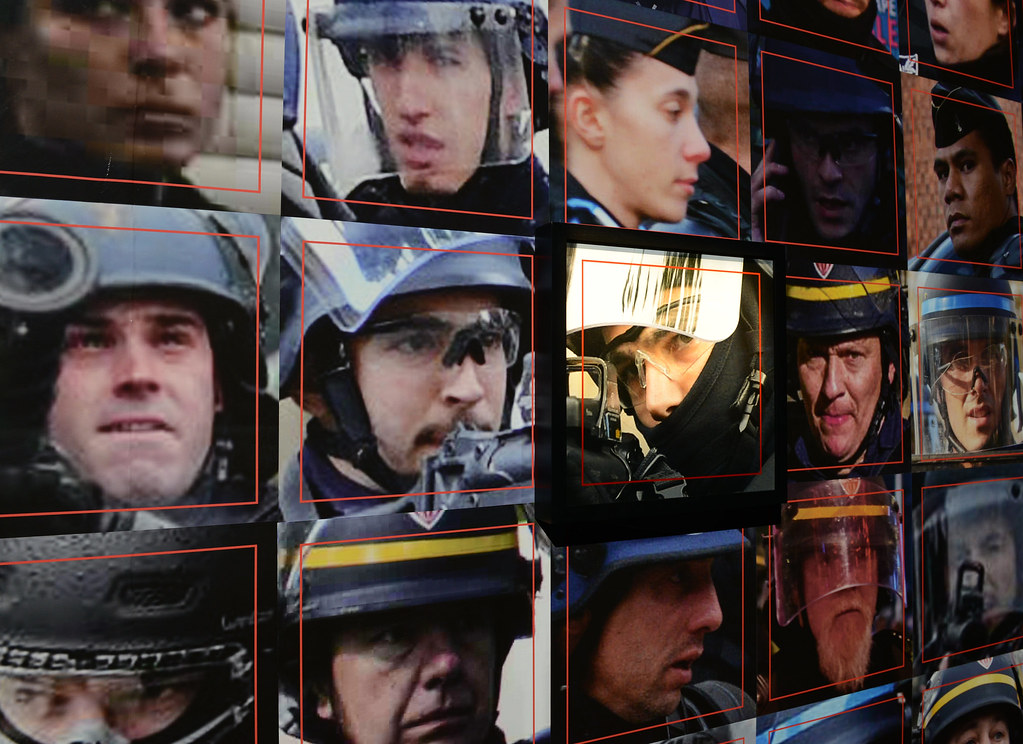Text
Blog 11 - CMS/PL 348
Video Surveillance, Torture Porn, and Zones of Indistinction by Catherine Zimm
The primary goal of this essay is to examine how torture and video surveillance intersect in modern horror movies, especially in the "torture porn" type. In today's life, surveillance technologies are so involved in horror cinema, which depicts the terrible actions that then consequently its also reproduced in real life. Then the paper continues also arguing about the zones of indistinction that characterize and manifest the state of exception are essential to the current torture practices used by the United States, illustrated by the detention center for suspected terrorists at Guantanamo Bay and the designation of CIA “black sites” within other nations. The discursive production of the already ambiguously situated political/legal Patriot Act in support of the (now perpetual) state of exception known as the "war on terror" results in the blurring of the lines between the space of extralegal surveillance and the production of suspects without legal rights who are targeted for indefinite detention and torture. The ambiguities created by monitoring do not undercut the justification for torture but rather create a place where torture is what "makes sense" out of the system, as shown by the zones of indistinction, both politically and in terms of narrative.
The essay also looks at how, in contrast to more openly political films that attempt to address the problem, the Saw franchise, a popular example of torture porn, serves as a gateway for moral and ethical issues. Overall, the study makes the claim that surveillance and torture are interpenetrating in surveillance cinema in a way that compromises each of their organizing components to establish power as the result of both systemic repetition and proliferation of violence. The piece also explores the Saw franchise's uses of torture as a narrative device and incorporates surveillance technologies to create a system of violence. The movie Saw is characterized by Jigsaw's philosophy, which involves teaching chosen victims the "real" value of life through torturous games and devices designed to punish their transgressions. The movies pose questions of ethics and morals, and each scene of torture and murder must be framed by a study of guiding principles. The Saw movies explore the complexity of modern forms of violence in a less didactic manner than films that are more overtly political, despite being seen as a symptom of media violence by some reviewers. They are more palatable to audiences while also resonating with assessments of biopolitical power structures and how the US war on terror operates. The purposefully non-political torture movie has proven to be incredibly popular, especially in the context of the state of exception of the United States' war on terror. In conclusion, the Saw franchise, while continuing to be a lucrative commercial picture series, employs torture as a point of entry into moral and ethical difficulties and offers an explanation of the complexity of modern forms of violence.
There are so many other similar movies that depicted horror and these movies/game are to teach people some life lessons.
Choose or die, in this movie, they use the horror of torture to make the person who hurt you pay for what they did by deciding what torture to give them.
youtube
Another example is Hunger Games, also you have to kill everyone before they kill you in order to survive or be alive before the game.
youtube
Nerve is a movie where participants are obligated to do the dare, and if not they die or another person dies. You have to play to survive the game.
youtube
The Guantanamo Bay detention facility for suspected terrorists, the Abu Ghraib incident, and the designation of CIA "black sites" in other countries are used by the author to illustrate how current US practices of torture are related to the horror genre. These concepts include "zones of indistinction," "bare life," and "Homo saucer”. All the movies I have listed up there are representing what really in real life happens, but they make entrapment movies. This ‘surveillance cinema plays a big ideology of war. In fact, the event that happened on September 11, brought the Guantanamo Bay military force to torture and punish people who they thought were responsible for the attack. This horror cinema brings people to do crazy stuff by simulating the movie or acts from this cinematic terror.
0 notes
Text
Blog 11 - COM 311
Before the world became a technological domination
This reading is about the introduction to Tiziana Terranova's "After the Internet" (MIT Press 2023) demonstrates an excellent way to gain a more contemporary perspective on the Internet's overall evolution, on how the Internet changed century by century.
The article examines the 2010s as the decade that significantly changed the development of the Internet and enabled it to become a tool for many aspects of daily life, including communication and connection. Social media websites like Facebook, Instagram, and Amazon got their start during this time. Terranova also discusses the privatization of the Internet, specifically how it currently functions as a collection of privately-owned platforms, most of which are managed by big tech companies. Throughout the essay, the term "Corporate Platform Complex" (CPC) is mentioned, especially during the pandemic years of 2020 and Covid-19. There was a massive increase in online business, and the rise of the CPC became a big deal because, since the lockdown began, people were not allowed to leave their houses. So, companies got creative and managed their business differently. Many clothing brands opened online platforms to make shopping easy and still run their business. Food deliveries were also created to make it easy to deliver groceries to people by those who owned the business

The 2020 Covid-19 Pandemic and Platforms
At the beginning of the pandemic, the education system went into a crisis on how to continue education. Therefore, all schools had to adopt a new online system to make it possible for students to learn from home. Consequently, many companies that form the Corporate Platform Complex (CPC) created various platforms that were accessible to everyone.
The lockdown helped big tech companies economically because it increased their product sales very rapidly, especially computers, which were necessary for online education to take place.

Regarding from pandemic boom of CPC, it is not already in development way before the pandemic too. The lockdown was the last push that, made the CPC needed to fully dominate the world.
Reflection:
In these four months of this course, I have learned a lot about the world of technology and communication in general. The materials we have read and seen have helped me deepen my understanding of the topics. I gained a more in-depth understanding of the emergence of the Internet and its purpose. Before this course, I was not aware of the development of Web 1.0 and 2.0. I have also learned that the internet is a dangerous place, regardless of age, because our data can be stored and used without our knowledge or consent. I realized that this generation cannot imagine living without technology because it has become an integral part of our lives.
0 notes
Text
Blog 10- CMS/PL 348
Emily Regan Wills 'Alan Kurdi's Body on the Shore'
The paper explores the impact of the viral photograph of Alan Kurdi, a Syrian refugee child only 3 years old whose body was washed up on the coast of Bodrum in 2015 after attempting to cross from Turkey to Greece. The author reflects on the differences in normative attitudes towards photographs of the dead in the Western world versus the Arab world and how the photograph's music resonates with her, shaping her work as a political scientist studying terrible things.
The Western world and the Arab world are significantly different from one another. The Arab world celebrates a person's death and embraces it, whereas the West is highly reserved and conservative. The child's portrait raised immediate material repercussions in addition to generating conversation and attention online. The images of Alan Kurdi on the beach gave the cost of unauthorized and conflict-driven migration and the Syrian refugee crisis in general reality and meaning for many people. The article also touches on the concept of humane insight and how it motivates action toward justice for those like Alan Kurdi, because due to the spread of the photos then other nations opine their door toward the immigrant people more presently. Every mother was affected by this loss because they reflected on the loss of a child.


The author also discusses their relationship with Alan Kurdi personally and how the melody of the image has influenced their job as political scientists investigating horrible things. Due to changes in society, there are now different standards for taking photos of the dead. In the 1800s, memorial photographs of lost family members were commonplace. They still exist in a limited way now because of photography of stillborn children. According to modern Western photographic conventions, taking pictures of dead people is a violation of their and their family members' privacy. On the other hand, Arabs would embrace the body of the dead people, because as Emily Regan Wills, mentions not all deaths are treated the same way, so for Arabs when someone died at the hand of an enemy is bravery. The history of photojournalism has revolved around documenting the war dead. For example during the Gulf War, the photographer Kenneth Jarecke photographed this soldier burned and he said that “If I don’t photograph this, people like my mom will think war is what they see on TV”. The title of the picture is named “Death of an Iraqi Soldier”.

Picture of children is always portrayed to be nice and cute. Picture from the Syrian war, or that is how the Western could portrait because you see them so fragile and innocent.
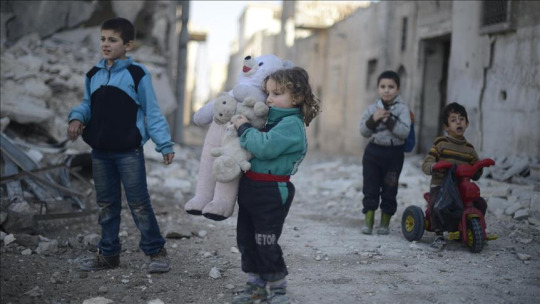
Enrico De Angelis 'The Controversial Archive: Negotiating Horror Images in Syria' in Della Ratta, Dickinson, Haugbolle
The article "The Controversial Archive: Negotiating Horror Images in Syria" by Enrico De Angelis explores the production and consumption of horror images in Syria, which focus on violence against individuals. The images are mostly produced by freelance or citizen journalists who often do not receive recognition.
The conversation about how to handle violent images is restricted by ethical and tactical issues. Large-scale video production during the Syrian conflict has led to the establishment of a "controversial archive," with many "interpretive communities" growing around it, making it challenging to come to firm agreements. These communities are vibrant, and the interactions among the members support ongoing conversation. In order to learn more about how Syrian photographers, media activists, and writers handle horror imagery and take into account the media, political, and social contexts, De Angelis conducts conversations with them. The author also looks at how Syrians interpret and respond to the seeming failure of the horror film industry.
According to the author, the Syrian revolt was one of the most extensively photographed global events ever. There is a significant amount of online media coverage of it. All of this online creation is referred to by the author as the "controversial archive." Immediately following the chemical assault, Adham al-Hussein captured images that quickly went viral. The photographs, according to President Trump, were the primary impetus behind their subsequent attack on a Syrian military airport. The identities of the photos and the victims frequently vanish when they are published on social media since the information spreads so quickly and there are so many photos or films on the internet. Thus explains why these images are referred to as "orphan images". Some critics feel that these images pointlessly degrade victims. Others suggest using them as "horror images" as a foundation to challenge prevailing frames of perception.
A lot of Syrian pictures are also about young and child pictures, remaining with no family, and I believe this is also the horrible part of the photos. The photo of this Little boy in Aleppo is a vivid reminder of war’s horror.

However, on the other hand, these photos are showing sometimes the reality of war and how those who mostly suffer are children. They are the victims. Ali Atassi's counterargument, according to which horror images should only be accumulated in secret, organized archives and not posted on social media. Photos of Syrian casualties are allegedly being used by the dominant vision system for purposes other than those for which they were intended. In the West, where they are consumed carelessly, the vast majority of images showing the torture and slander of Syrian bodies are in circulation. Critics question whether the dissemination of those images adds to the social construction of Syrians as second-class citizens of the international community. Society should comprehend and recognize the reality of human cruelty in the twenty-first century.
0 notes
Text
Blog 10 - COM 311
On the genealogy of machine learning datasets: A critical history of ImageNet
The article explores the biases and assumptions embedded within machine learning datasets that perpetuate discrimination and unfairness in algorithmic systems. The authors use critical discourse analysis to present the roots of ImageNet, a large-scale computer vision dataset, and trace the discourses that surround this influential benchmark. The authors highlight assumptions around ImageNet and other large computer vision datasets, including the accumulation of more data, the computational construction of meaning, and making certain types of data labor invisible. In order to overcome data biases and guarantee algorithmic fairness, the article underlines the necessity of interpreting ML datasets as a type of informational architecture and promoting critical histories of data collecting.
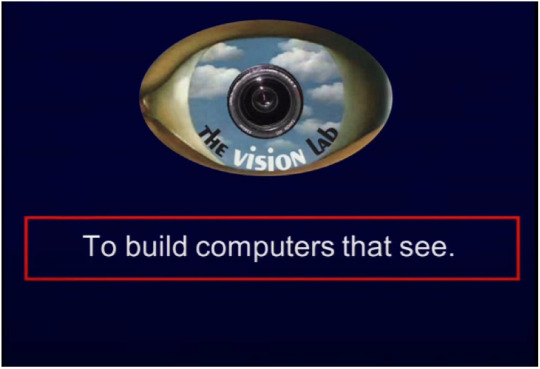
Basically, computer systems can anticipate, classify, order, make choices, and generally extract knowledge from data using a variety of machine-learning approaches. It is an area of artificial intelligence that seeks to educate machines to carry out tasks based on examples rather than predefined codes. More points are made in the article, the larger context of data collection and curation is not taken into account by algorithmic fairness interventions that aim to balance the representation of demographic groups within training datasets. As standards and norms for data formation in AI research continue to be established, critical discourse analysis can be used to explore the histories and modes of the constitution at work in dataset creation.
Eryk salvaggio - Cybernetic forest (Class 4 video)
There are databases that deal with colors, such as Who Decided the Colors of Birds frames. In order to categorize them, they discover certain patterns from the data. The fundamental argument put out by the authors arises from the fact that people's data is used to train machine learning algorithms, which are used in a number of socially relevant fields. However, the authors express their dissatisfaction with the fact that such a training system is connected to the inaccurate and/or underrepresentation of minorities, especially black people and individuals that were not recognizable before. Algorithmic fairness interventions have appeared as a solution to this problem. They rely on training datasets that balance the representation of various demographic groups.

Then there is more example of software for visual object recognition was developed using the extensive visual database known as ImageNet. Because ImageNet was one of the largest human-annotated datasets ever at the time of its inception, this database is crucial. ImageNet, in contrast to other datasets, made use of the Amazon Mechanical Turk platform, which included a human review of the data collection process. Prior to ImageNet, the majority of techniques relied on tiny sets of photos. ImageNet is significant because it altered how an industry perceived data, leading to big data's central role in AI research.
The fundamental premise of the reading and the explanation in the movie is that AI computers continue to learn whatever humans do. Because AI systems are ultimately created based on existing programs and data, if we continue to feed the computer and network with human ideas, AI will gather the data and incorporate it into their system. They remain informed and advance in this way. How quickly AI learns and assimilates knowledge is quite amazing. However, since they were made by humans, if AI was discovered, it would also be thanks to a mind of human creativity. People are evolving and terrified of their own inventions because a human brain is actually hidden behind the AI creation, so it is impressive how our own invention is scary. The scary part is no network, but those that create, and do not include the purpose.
0 notes
Text
Blog 9 - CMS/PL - 348
Paolo Cirio: “Evidentiary Realism”
Paolo Cirio examines the return of realism in this blog post, focusing on "Evidentiary Realism." Through the conflict and collaboration of forensic documentaries, forensic architecture, and investigative methods, realism has recently made a comeback in the arts. Realist art has always been an effective tool for exposing the evil that is buried beneath historical periods, but not there is a new way to see another perspective that is near to our contemporary era.
As defined by Cirio, "evidentiary realism" is a type of art in which the creator ingeniously and inventively portrays actual evidence, providing information in a way that is both aesthetically beautiful and instructive. According to Cirio, a representation of reality can only take into account the post-visual conditions. Also because the data, technology, etc. are controlled by the power structure. Similarly to classic realism, evidentiary realism aims to produce evidence by assembling fragments of reality, which we can see the connection with the forensic architecture technique. Even the sociopolitical, technological, and cultural infrastructures that affect people's perceptions of reality and the truth are examined under evidentiary realism. The scope of what can be observed beyond sight is reduced through technology. As it displays evidence in a manner that is both aesthetically pleasing and in some ways also instructional, Cirio contends that this new kind of art is more meaningful and significant than previous art forms.
Cirio continues by illustrating how using modern technologies (satellite pictures, open source information, etc.) and cognitive capabilities allows artists to capture reality more easily, quickly, and completely than ever before. The combination of geographic, architectural, biological, and financial data is now possible given to these new instruments. Because it has examined media and content using a variety of sources and approaches as well as forensic languages to examine representation and reception, Cirio argues that more reality in documentaries, thus means that they are forensic information. And only research on the social, economic, legal, and political contexts of institutional power can produce realism.
In realism, artists must convey and be specific about the purposes of their work, and the settings of their creations. Cirio claims that this type of art has the capacity to reach a bigger audience than traditional forms of art and may be used to generate works that are both aesthetically beautiful and educative, by presenting facts in an appealing technique. Evidential realism can be used to create works that are significant and impactful because then politics could be in between too as well as works that are significant and powerful while also presenting evidence in an appealing way.
Cirio then continues by concluding that Realism returns, because we now live in a capitalist culture that has caused social crises in the world and has demonstrated our willingness to speak the truth. Realist aesthetics typically reemerges when social and economic crises occur. Alongside this first wave of realism, Impressionism developed and prioritized the individual over the group. We could argue that after the last decades of the 20th century, which were marked by pop art, nihilism, and postmodernism, we are now experiencing a new era of realism in art. The social realm and its representations are once more pushed to the prior of social research, due to the 21st century.
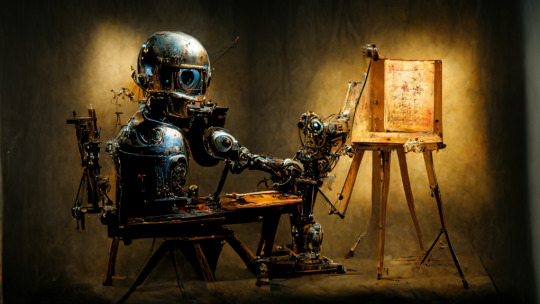
0 notes
Text
Blog 9 - COM 311
Trebor Scholz - "Platform Cooperativism: Challenging Corporate Sharing Economy,"
In "Platform Cooperativism: Challenging Corporate Sharing Economy," Trebor Scholz examines how the corporate sharing economy, which is not about sharing and was not intended to be this way, might be contested. Instead, it is an on-demand service economy that perpetually infiltrates our lives with market interactions. Platform cooperatives, which aim to alter ownership and governance structures, are a weapon to combat this type of economy. The extraction processes that are heavily ingrained in social interactions can lead to antisocial behaviors, feelings of competition and anxiety, as well as mental health problems.
The corporate sharing economy is fundamentally based on digitalized labor, but in the process, workers' rights are being lost. According to legal expert Frank Pasquale, conventional employment is similar to marriage in that both parties are dedicated to a long-term joint effort. This project's workforce now wants a succession of hookups as a result of digitized work. Computerized work gives the impression of adaptability, independence, and choice. But in fact, there is no security whatsoever for the employee. Additionally, Scholtz contends that illegality is a sharing economy strategy. Businesses in the sharing economy that do not pay taxes and the absence of worker dignity, rights, and democratic ideals are examples of the "nullification of federal law." Given that it pays drivers less than the legal minimum wage, Uber is an example of a company breaking the law. Scholz is an advocate of the "solidarity economy" and the establishment of cooperatives made up of individuals eager to work together and form a business to meet social and cultural needs as opposed to purely commercial ones.
Platform cooperative thinking is predicated on the following:
simulating the platform's current technologies while using a different ownership model.
enhancing values rather than just profits - solidarity
redefining the terms innovation and efficiency to ensure that everyone, not just a select few, benefits from the system.
The 10 principles of platform cooperativism are:
Collective ownership
Co-programming
Protective legal framework
The right to log-off
Portable workers' protections and benefits
Decent pay and income security for workers
Appreciation and acknowledgment
Protection against arbitrary behavior
Rejection of workplace surveillance
Transparency and data portability
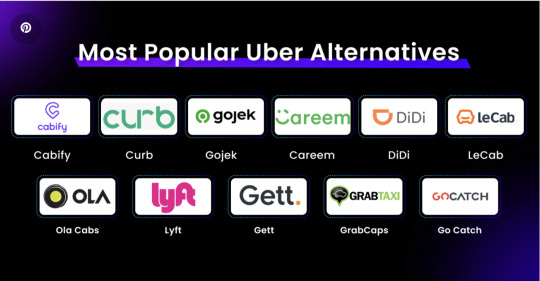
These are the logos of the new most used apps in alternative to the Uber app.
For example, Lyft it's an American taxi-hailing app platform that has quickly become incredibly successful. It has been a fantastic alternative to Uber in the US. This corporation is involved in several areas besides the taxi-hailing industry, including food delivery apps, rental automobiles, bicycle-sharing programs, and more
For example for fast fashion, the labor is so cheap and the production quantity is big and fast. The people that work for this fast fashion industries work overtime and low paid. However, at the same time, they sell so fast, and many people rather buy cheap quality products and pay less than spend a lot for that brands that are even more famous.
0 notes
Text
Blog 8 - COM 311
Nick Couldry and Ulises Mejias Data colonialism: rethinking big data’s relation to the contemporary subject.

The essay by Couldry and Mejias "Data colonialism: rethinking big data’s relation to the contemporary subject", explores the concept of data colonialism throughout the original history of colonialism, and in which way big tech companies capitalize on their interest in our data.
Data Colonialism is a term used to describe the way that human exploitation is normalized through the collection and capitalization of data. This form of colonialism also characterizes the historic colonialism of data relations. Couldry and Mejias contend that the expansionary nature of data collection both geographically and socially is what characterizes it as imperial. Additionally, they think that data colonialism will eventually create the conditions for a new phase of capitalism, which we can hardly conceive now but for which the data-based appropriation of human life will play a key role. Right now, preventing the current data colonialism takes precedence over making predictions about the next era of capitalism. We can eventually understand Big Data from the South in this way, then. The so-called "data relations" are a further method by which we can observe how social life around the world transforms into an "open" resource for exploitation that is essential "just there" for capital. This is a new kind of interpersonal interaction that makes it possible to collect data for commercialization. From this, we can see that although the epicenter has slightly moved, the global flows of data are just as vast as the appropriation of land, resources, and people during historical colonialism.
In this sense, personal data act as the new capital and oil in the digital media industry. Continuous data gathering offers opportunities to influence user behavior so that companies can use it for data exploitation. Couldry and Mejias, acknowledge data colonization also uses other extractive rationalities to carry out the appropriation of personal data. For instance, a social rationality that views much of the labor that goes into data extraction as "just sharing" has no worth. Both data colonization and historical colonialism are based on the idea of "cheap nature." Big companies things as history, if people “share” their data with them it means that were abundant in raw materials and natural resources, whose appropriation was seen from the invaders' viewpoint as acceptable, this theory was used by historical colonizers to justify their actions. The same thing is done the companies with people’s data. So when a person uses a new platform, when you sign up to make use of it the data is taken even if you are not aware of it.
Data colonization has caused plenty of problems over the past two centuries, particularly since the internet and networks were first used for exploitation and as technology advanced. For example, we see one big example that happened not so long ago with the Facebook platform. With the election of the United States in March 2018, Facebook was used to collect users' information to make voter profiles for the election without the users' knowledge, so Trump could win by using these false users.
Every single app we have on our devices, they collect data, your data. The essay by Couldry and Mejias concludes that even if we reject the idea that the ongoing collection of data from people is natural, let alone rational. Because in the end, rejects the idea that the output of data processing is a naturally occurring form of social knowledge, rather than a commercially motivated form of extraction that advances specific economic and/or governmental interests. However, rejecting data colonialism does not mean rejecting all kinds of data collection and usage, but just the form of data extraction that is opposed to data colonialism.
0 notes
Text
Blog 8-CMS/Pl 348
Rebecca L. Stein: “The Boy Who Wasn’t Really Killed”: Israeli State Violence in the Age of the Smartphone Witness.
Nowadays you can no longer tell what is true or not about everything that happens online. Nowadays, technology is so advanced that it is hard to track what is being changed or changing. Above all, social media news and the information shared is untrustworthy. Thanks to these new techniques and applications, you can now alter, create, and edit anything to make it believable.
And talking about the creations and modifications. We can see the manipulation of certain information through techniques. The reading “The Boy Who Wasn’t Really Killed”: this week from Rebecca Stein, analyzes the growth in the use of technology and digital forensics (technology becomes a witness) in Palestine and Israeli conflict in the first two decades of the 21st Century. As for the violence we witness with Israeli attacks, she wonders whether the use of devices like cameras and smartphones can help represent the violation of human rights in Palestine. Rebecca Stein's primary objective is to investigate the social life of the Israeli theory that Palestinians are using technology to fabricate evidence or not. Palestinians gather an increasing amount of videos of the atrocities done by Israel, even in real-time, by carefully analyzing every sound, movement, and further detail to see if they are fake or not. Since neither country believes the other's account that it is truly true, every incident and case that occurs between the two countries is questioned. Although it is more difficult to see the truth in a piece of content because of digital media, why should they make it a joke or false news in a time of war? There are a ton of other people who simply read the news and believe it to be true without knowing the truth; they propagate the news and cause chaos. Why do people want such a mess when the actual conflict is in disarray?
One thing I've observed is that the majority of tragedies that are reported involve children and women. Reading reports about young children fighting in the war is even more heartbreaking. Seeing parts of the world, still fighting for their human rights is insane.

The essay from Rebecca Steins, opens with the story of Ahed Tamimi, a 16-year-old Palestinian activist from the West Bank town of Nabi Salih, kicking and slapping an Israeli soldier outside her house in December 2017. This occurred during the neighborhood's weekly anti-occupation demonstrations. Another event that Stain tells of in the first days of the second Palestinian intifada was the seeds of the Israeli repudiation screenplay. The killing of Muhammad al-Durrah and his son became the face of Palestine media for a while, on September 30, 2000, in the Gaza Strip while he was trapped with his father in the line of fire between Israeli soldiers and Palestinian gunmen.
According to Steins, the technology prevents people from believing what they see. What has changed in the age of smartphone and camera normalization is that people are less trusting of visible evidence due to the proliferation of digital witnesses since the "early days" of digital forensics. Because there is no correct way to see, people eventually stop being convinced by the visual component and continue to believe what they want to believe. There was a strengthening of rejection in the age of smartphones. People frequently believe what they already believe. If someone would interview Israeli cameramen, asking about the footage and images they would laugh, because they would reply such as “It seems staged.” and “Everything seems staged.” As described by Landes on his blog, this event paved the way for the campaign that would eventually become the focus of his life's work, of which the al-Durrah episode was only one example. Lande gives the name “Pallywood” to this event because it refers to "the Palestinian national film industry in which militant journalists and street actors produce staged news as propaganda," therefore this was directed to the industries. Later, Pallywood would serve as a guide for identifying and rejecting Palestinian "staged news," serving the patriotic, pro-Israel public as a road plan of sorts. These pictures and recordings spread quickly online.
Last case Rebecca Stained talks about it when Israel restarted the building of the separation barrier in the West Bank village of Ni'lin, endangering sections of agricultural land, on May 2008. In response to this occurrence, the populace organized a sizable demonstration that drew unarmed local and foreign activists into its fields. However, an Israeli officer fired a close-range shot at Ashraf Abu Rahma, a Palestinian protester who was bound and blindfolded, during the demonstration. A Palestinian teen named Salam Kana'an secretly taped the proceedings on a video recorder. Salam dropped her camera in shock as the soldier pulled the trigger, and the actual gunshot was never captured on the video. Cameras, at that time, were not something usual to see, therefore when the day of the trial came, they had to figure out the evolution of the event in different ways. The first was that the footage had been altered, and the second was that because the camera had been dropped, it was impossible to confirm what had happened. Whatever the case, it was ultimately determined that the evidence had been falsified because the sound and the placement of specific items did not seem to support the story that Francis had constructed. At first, when I watched the video of the Israeli soldier shooting at these two men from a distance and saw their posture, and action it looked like for them this was a game. It did not look like, they were even shooting for a purpose, If not just for fun or whatever.

As we see all the events and blame Palestine and Israeli attempts to use against each other, on social media for their advantage, is not safe to share any more information because then it becomes a digital conflict. Additionally, because the evidence is being embellished or manipulated, the conclusion never comes to pass.
1 note
·
View note
Text
Blog 7- CMS/PL 348
The propaganda war for Ukraine and Nuclear Cyberwar
The first argument is the video of The propaganda war for Ukraine by DW Documentary. It discusses the war in Ukraine and how it is not only a military conflict but also, for the first time, a conflict covered in real-time by the media. The video centers its point on cyber warfare and how social media and television both play a significant role in propaganda. Today in the 21st century, social media and technology are emerging rapidly to take over the old customs of war. In fact, in the video, we see the war between Russia and Ukraine through the media, and how the media has become the center of the battle. The term used these days for these conflicts in media is called cyberwar or cyber warfare, instead of just warfare.
What is cyberwar?
The definition of cyberwar is a nation-state or international group that attacks another nation by attempting to harm them by using computers or information networks, and provoking violence.
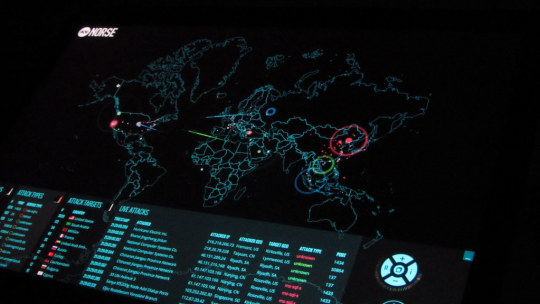
The video continues on examining these wars between the two nations, by how each president addresses their messages to their citizens. On one hand, we have the President of Ukraine, Zelensky uses lateral communication because he always demonstrates himself at the level of the citizens, by showing the evidence that he is doing what he says he is through media. Meanwhile, Russian President Putin uses a vertical strategy of communication, because he uses very serious and direct commands to the citizens. He also demonstrates such by using TV-formatted talk shows, and live-streamed festivities of the Russian Federation, Victory Day, which honors the Soviet Union’s victory over Nazi Germany, this format is more of a propaganda method. Both countries are portraying propaganda and political communication. Russian President promotes the “necessary to eliminating Nazism in Ukraine”, then there is president Zelensky that gives hope to the citizens by making them believe that the war will be over or that it can end, by calling for help from European countries. Vladimir Vladimirovich Putin, president of Russia, uses the "denazification of Ukraine" as a justification for the country's crimes against humanity.such act should not be justified.
In the context of the ongoing Russia-Ukraine conflict, critical media analyst Svitlana Matviyenko discusses nuclear tensions in cyberspace, the imperial roots of nuclear occupations, and nuclear colonialism. She starts by establishing that digital communication systems are the foundation of nuclear weapon command and control, especially in this technologically developing era. Nuclear weapons and cyberwarfare operations can have destructive capabilities, for example, we can recall the drone killing of Osama Bin Laden by the US movement.

Nuclear weapons and cyberwarfare are both impossible without digital communication. Matviyenko, reports that on February 24, 2022, Russian military troops took control of the Chornobyl nuclear power plant, and on March 3, 2022, Russian rockets struck Enerhodar, an industrial area and satellite town in Ukraine. Russian forces then surrounded the Zaporizhzhia NPP and shelled at civilian infrastructure and the plant, causing Ukrainian troops to withdraw because they were afraid of a nuclear war. The strategy of nuclear terrorism and cyberwarfare are still being used in Ukraine as part of the war domain where imperialism and some aspects of colonialism rule. Svitla Matviyenkona also argues that the past of Ukraine and Russia is complex and cannot be characterized by the same characteristics of colonialism. Nuclear terrorism frightens populations by spreading fear, using force, and using violence. The danger posed by nuclear terrorism, whose effects could be both global and long-lasting, is perhaps the most severe. Cyberwarfare is only the technology and network information to make the war begin.
0 notes
Text
Blog 7 - COM 311
Nick Srnicer - "Platform Capitalism"
In the second part of "Platform Capitalism", Nick Srnicer examines the traits of the digital world's platforms through the prism of capitalism and its economic dynamics. When a crisis occurs, capitalism as an economic structure reinvents itself. In fact, there was a lot of enthusiasm when the ban on conducting business online was lifted at the end of the 1990s. Because it was such a huge market to maintain, everyone was investing in it up until it crashed.

As a result, only a small number of significant players such as Google remained who use the data-centered business strategy. The developments in technology transform into an informational, cognitive, knowledge-based, or immaterial economy. Instead of owning the means of production, the dominant actors in the digital media industry acquire ownership of the information. There is a shift toward production that is more immaterial, such as services, information, and cultural content. Internet-based businesses rely on users' data to be extracted in order to be affluent. Physical data centers are used to store data, and massive amounts of energy are needed to support worldwide internet traffic. As a result, while the infrastructure is material, the job itself is immaterial.
The platform is the center of the company's strategy for efficient data extraction. Though, what is a platform?
Platforms, according to Srnicer, are digital infrastructures that permit communication between two or more organizations. Therefore, they present themselves as mediators who connect various individuals. They suggest a setting that encourages customer interaction, to have traffic on their web and active users. However, because they are assuming control over all of life and evolving into entities, they do not only make up the world. Platforms also depend on what is known as the "network effect," which increases the platform's value as more users use it. Platforms compete for users' interests and work to maximize the amount of time users spend on the platform. Platforms are the new trend that uses cross-subsidization, where one side of the platform lowers the cost of service while the other side increases the cost to make up for the losses. Platforms, which represent politics, are in charge of and regulate all game-related exchanges. Who owns the entire unity holds code, data centers, and servers depends on who owns the platforms, which involve both software and hardware.
There are 5 types of platforms:
• Advertising Platform – the business model is built on collecting user data, processing it, and creating personalized data for ad targeting. Facebook and Google use this business strategy. For instance, I search for a clothes brand webpage on Google, and the next day my social media accounts will be full of ads for the same brands or similar clothes.
• Cloud Platform – the business model based on owning software and hardware and renting them out, for example, Amazon is the largest cloud platform provider.
• Industrial Platform – It creates the tools and software necessary to convert traditional production methods into web-connected processes and to convert products into services.
• Product Platform – By getting subscription fees, it converts a traditional product into a service.
• Lean Platform – It relies on renting and generates profit by reducing the cost of asset ownership. For instance, while offering taxi services, Uber does not own a single vehicle, and similarly, while providing, Airbnb does not own any real estate.
Will Platform Capitalism dominate the future, or would be the disaster of the future? The answer would be easy on the fact that it will be the domination of the future, and we see that throughout the development of social media change and the development of technology. But who knows whether it will be good or bad? Just a few days ago, a brand new case was opened on data collecting on the app TikTok, accusing TikTok creator of collecting users' information.
Article 1: TikTok CEO Shou Zi Chew's Congress showdown: Five takeaways.
Article 2: United States wants to ban TikTok
0 notes
Text
Blog 6 - COM 311
Kylie Jarrett's: 'Digital Labour'
What is Digital Labor?
The definition given by google “is work that is performed by robotic process automation (RPA) systems. The digitization of labor is being facilitated by technologies such as cloud computing, social media, big data, mobility, data analytics, and machine learning.”
We can go in-depth to define ‘Digital Labour’, with Kylie Jarrett’s book “Digital Labour”. Jarrett examines the evolution of digital labor through Chapter 1 “defining digital labor” and Chapter 2 “Exploitation: Digital Deeds Done Dirt Cheap”. The first chapter starts with the tragic death of Deliveroo driver Thiago Cortes, to the introduction of digital labor. Deliveroo is an app, where customers can request food to be delivered to their homes using the app. As of now, as with any food deliveries, Deliveroo drivers also use their bikes and scooters to get to the customer's house to drop off the food. However, it is considered to be dangerous and unsafe conditions experienced by the employees. After Cortes' death, the employees of Delievero protested against their working environment and for their unsafeness. The story made it to social media and it spread around the world. As Kylie Jarrett read the news about his passing and continued to browse various social media platforms, she realized that more data based on her preferences were being produced and used to train algorithms with each click.
The concept is that digitization has changed society, including the labor market and how most jobs are performed. For example, Jarrett points out that the unsafe, low-paid, and marginalized work of Cortes's story seems far removed from the clean, well-compensated, and culturally esteemed careers of Facebook or Google's white-collar workforces. All of these types of work are engaged in what has become known as digital labor. As the area of digital work began to expand, it became crucial to comprehend both the digital economy and the different types of labor it employs. According to Jarrett, the term "digital labor" is poorly defined and used to classify and characterize an almost puzzling exhibition of activities, professions, and positions across a diverse range of sectors, despite its widespread recognition and economic importance. The term was first used in the early 2000s to criticize the exploitation of unpaid user activity within the developing digital industries and to support the inclusion of this kind of work into economics, as explained by Jarrett. Nevertheless, "digital labor" has now turned into an "empty signifier," a phrase lacking any distinct critical or analytical function. With this new definition, the pool of potential candidates is reduced to those who create digital content such as games, websites, and social media material. Billions of people generate content every day, unaware that they qualify as digital laborers. Thus, by allowing users to stay constantly on their platforms, big social media companies can continue to make money.
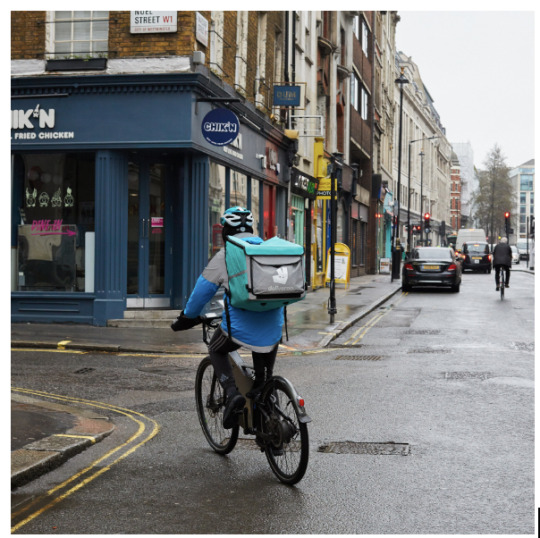
However, the definition excludes the numerous individuals who work in the dangerous fields of mineral extraction, manufacturing, and e-waste disposal. These fields are essential to the operation of the digital media sectors and support them (Fuchs and Sandoval 2014). The term "digital labor" is mainly used today to define the work of users, platform-mediated workers, and formal employees who generate value within the digital media industries. This includes social media material created by common users, platform-mediated workers who perform social media gigs and careers, and formal workers who are part-time or full-time employees of technology companies.

Kylie Jarrett's conclusion, "Exploitation: Digital Deeds Done Dirt Cheap," highlights the issue of exploitation in today's digital era. The author links exploitation to Marx's labor theory of value, which refers to situations where workers produce more value than they are paid for, or where employers make a profit from their work, resulting in unfairness and a cycle of production that benefits large corporations. Capitalism was an essential part of society long before technology existed, so its presence in technological environments is not surprising. Furthermore, the word "exploitation" is frequently used in contexts other than formal, structural ones that are related to this theory. It is frequently used ethically to describe both the scope of excessive value extraction and the cruel, coercive, or cynical conditions under which the process occurs. Studies on workplace exploitation tend to focus on describing the unfairness and force of the workplace in concern and point to the pain of employees. Due to the requirement of producing the content or delivering it by the due date, those who work in digital media as digital laborers frequently need to put in a lot of overtime and long hours for little in the way of wages. Thus, the problem with “digital labor” is the main reason the employees complain or encounter problems in this word field.
To understand better this working overtime for a very low payment rate, the documentary “The Cleaners” explains it perfectly, because there are people who have worked in that field.
youtube
Another example is this article from Chinese ex-employees that used to work as Content Moderators reveals the truth behind the working process.
A small piece from the article "The overtime culture at Chinese tech companies — notoriously known as “996” or 9 a.m. to 9 p.m., six days a week — has been a long-standing issue, even as authorities last year stressed it was illegal. In the past five months alone, an online campaign to underscore worker’s rights and a viral resignation post have projected familiar unhealthy working conditions, which have also been blamed for deaths at domestic tech companies."
0 notes
Text
Blog 6 – CMS/PL 348
Susan Sontag: "Regarding The Pain Of Others"
Susan Sontag in her book “Regarding the pain of others”, examines the ethical and moral implications of viewing images of human suffering and violence. She discusses how people respond to images of suffering and pain, particularly in the context of modern media and technology. The widespread dissemination of images of violence and suffering has led to widespread desensitization to these types of images. This desensitization is damaging to our ability to empathize with the pain of others.
Chapter 2, of “Regarding the Pain of Others'', explores the evolution of photography and its impact on modern life. Sontag contends that viewing images of natural disasters taking place all over the world (the living-room conflict) is a modern viewer's "quintessential modern experience." The news worldwide affects people (whether that influence is negative, outrage, titillation, positive, or compassionate), because “if it bleeds, it leads”. When something is captured on camera, it appears to onlookers as "news" when they are a distance away. When something is captured on camera, it appears to witnesses as "news" when they are seen from afar. Sontag then explains how certain elements, like separation and lack of exposure, influence how we perceive suffering and pain. She contends that society has evolved a "spectatorship" mentality toward other people's suffering. Without feeling a genuine link to or empathy for those who are suffering, we frequently observe and consume graphic images of suffering. We can consider this to be the quintessential experience. Thanks to the descriptions provided by daily journalists, now that we are aware of what occurs daily around the globe, readers of newspapers can virtually see and hear the cries of those suffering in combat fields. Nonetheless, consumers in today's culture are so accustomed to seeing certain things that they now consider them to be normal. Even though pictures and other visual representations can sometimes give us a brief glimpse of someone's suffering, they can never fully express the depth and intricacy of that experience. These pictures can be warped, altered, or weaponized for political or commercial gain, leading to a dangerous cycle of practice and exploitation.
Chapter 2 of Susan Sontag: "Regarding The Pain Of Others" book, could be compared to the book I found for my research by Beth Hinderliter "More Than Our Pain", which talks about the pain of Black bodies being discriminated against and viewed by everyone. The book also brings on how the Black Lives Matter movement is reacting to this, embracing the pains through visuals and writing, in a phone so that people see the reality and not just the suffering.
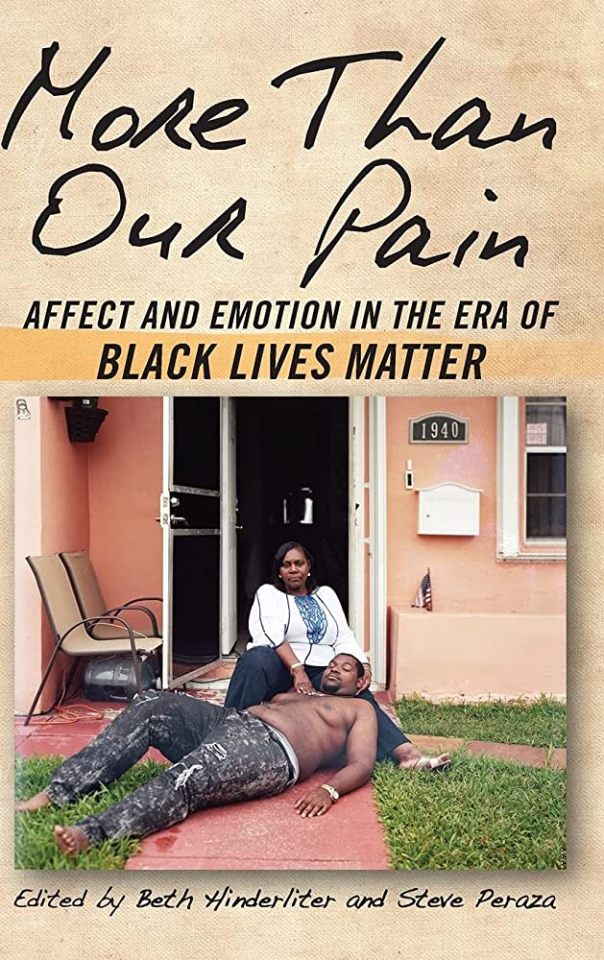
These photographs of atrocities or suffering from war serve as a medium to bring the reality of the moment to a wider audience. Sontag notes that the act of taking photographs, even if it attempted to be an objective representation, is subjective due to the photographer’s choices of capturing moments or how each image is composed. In this sense, photographing human suffering might be regarded as unethical because it supports an invasive culture.

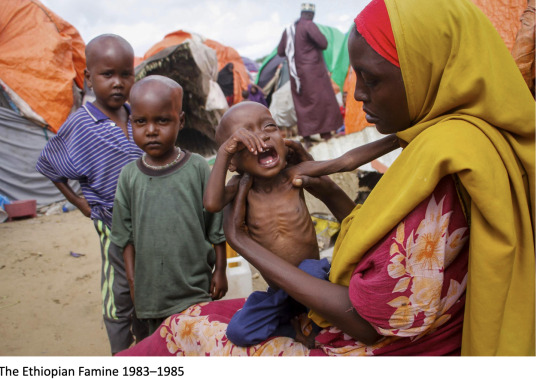
However, the action of photographs offers a quick method to understand something and a simplified format for memorization in an age of information that is overloaded. The image has been altered by memory to fit its purposes, becoming emblematic not for the event that was meant to represent, but rather for what would shortly take place another enormous horrific event. The urges and fidelity of the different communities who use a photograph decide its meaning rather than the intentions of the photographer. All memories, including those of war, are mainly local, and Sontag argues that we must recognize that some conflicts have received more media attention than others. The decades-long civil war in Sudan, the Iraqi campaigns against the Kurds, the Russian invasions, and the occupation of Chechnya, these memories have gone relatively under-photographed. Thus, we can see that it is true, the famine in poor countries has not received any changes or have not at all made a difference. Photos, media streaming, and journalists can post and report as much as they can but if they are just photo memories, then there is no purpose to sharing the pictures.
In chapter 3, Sunsa Sontag discusses the “image world,” which refers to the bombardment of visual images in contemporary life. With the normalization and abundance of photographs, we have also become numb and indifferent to them. The iconography of suffering is extensive. The sufferings that are most frequently considered to be worthy of representation are those that are believed to be the result of wrath, divine or human. There appears to be almost as much desire for pictures of hurting bodies as there is for pictures of bare ones.
Sontag explores the idea of media and popular culture reducing the perception of the world to the visual, which is a realization that is consistent with the excess of media in today's world. The rapidity and intimacy of life are diminished by the reception of the image world, which destroys our relationship with the actual world. People tended to believe what they see in media is truly the truth. Sontag also analyzes the distribution of these pictures through different media as regulated, tools of control. This widespread inequality contributes to the uneven division of violence depicted in images. Therefore, Sontag says that perhaps the only people with the right to look at images of suffering of this extreme order are those who could do something to alleviate it or those who could learn from it. The rest of us are voyeurs, whether or not we mean to be.

An Iraqi soldier who has been burned beyond recognition is depicted in the front windshield of a wrecked truck. People need to see images of horrific things to understand what conflict is really like. If not, people might assume that conflict is defined by what they see on television, on social media, and in certain people's posts, says the photographer Ken Jarecke. Because the photographer's intentions do not decide the meaning of the photograph, which will have its career, blown by the urges and loyalties of the diverse communities that have used it, as Sontag ends her chapter 3 describes, the photograph has its career.
Judith Buttle: Precariousness and Grievability- When is life Grievable?
Judith Butler's essay "Precariousness and Grievability" explores the question of when human life is considered grievable in modern society. Butler argues that our perception of whose life is worthy of grieving and protection is shaped by the discourse and norms of our culture. Those whose lives are deemed "valuable" are generally those who are able-bodied, productive, and conform to societal standards of gender, race, and sexuality. On the other hand, those who are marginalized or excluded from these norms, such as refugees, people with disabilities, or those who do not conform to traditional gender norms, are more likely to be deemed "un-grievable" and expendable. Moreover, Butler argues that this division between those whose lives are grievable and those who are not is not a natural or objective fact, but rather it is the result of political, economic, and social power struggles. The issue is that the dominant cultural and political institutions have the power to shape our perceptions and attitudes about life and death, which can have serious consequences for those who fall outside the norms of society. To create a more inclusive and equal society where all lives are valued and protected, Butler's essay challenges us to consider the social norms and values that determine whose lives are considered deserving of mourning and protection. After the 9/11 attacks, graphic images of the dead appeared in the media alongside their names, biographies, and the reactions of their relatives. Public grieving was devoted to making these pictures iconic for the country, which naturally meant that there was much less grieving for non-US citizens and barely any public grieving for illegal workers.
Michael Jackson's- Heal The World, this song was dedicated to the children that were dying of hunger and to those that were less unfortunate.
youtube
We read about lives lost and are frequently given statistics, but these tales are repeated every day and it seems like there is no end in view to the repetition. Nonetheless, we can see also that this reading can be tied to “ Regarding the pain of others”, we see images of horrors and famine and there is none one to make a difference or change the situation. People just view the picture and feel empathy for instance and a second after is gone. The fact that life is sensitive to injury, for instance, or that it can be lost, destroyed, or repeatedly ignored to the point of death emphasizes both the precariousness and the finiteness of life. Precariousness suggests social living, which is the idea that one's life is constantly, to some extent, in the control of another.n We can see an example of this case is the war between Russia and Ukraine. Russia is letting many Ukrainian citizens die. Another example is Palestine and Israel, Israeli force is voluntarily killing Palestinian people because they think they do not have the right to occupy the same as they are. Another example is the conflict between Israel and Palestine, where Israeli forces kill Palestinians on purpose because they believe they do not have the right to inhabit the same territory as Israel.
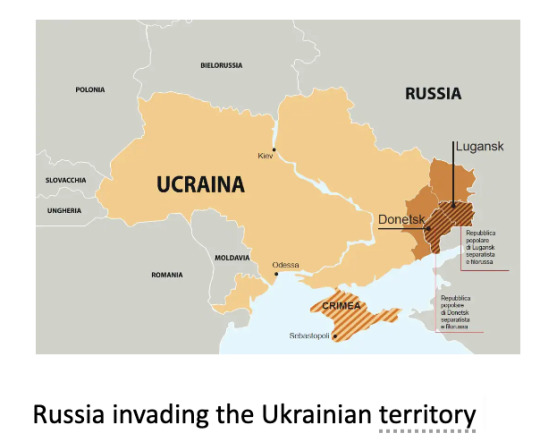

0 notes
Text
Blog 5 - CMS/PL 348
Necropolitics and Becoming the Black of the world
What is sovereignty?
Sovereignty is a political concept that refers to dominant power or supreme authority.
Well, reading “The becoming black of the world”, by Achille Mbembe we see a shift to the actual concept of the word sovereignty from its root. Achille Mbembe is a Cameroonian political theorist and historian, and he describes that modernity believes a liberal democracy is the right to self-determination of free people is limited by their reason. Mbembe explains this shift through the history of slavery, by giving new forms of theories on biopower and biopolitics that are linked to the concept of necropolitics. Necropolitics is simply taking a distance from a traditional concept, and in his essay, he talks about the relationship between power, sovereignty, and the state's ability to determine who has the right to live and who has the right to die. In the modern state of the sovereign, the state has the power to decide who must die and who must live, either by depriving them of access to their basic resources or by simply convicting them of a crime they did not commit. Primarily for people of color, minority groups, and social determinants, have been a big problem in determining the concept of sovereignty.
Furthermore, the reading goes on with Michel Foucault’s idea of biopower, which is the sovereignty used over life. Meaning that in life over which power took full control, an authority can rule over all aspects of organic life. Therefore, state power's control extends also to power over the physical bodies of a population, such as through deciding on abortion. Therefore, state power also influences a population's physical bodies, such as through the ability to decide whether a female can or cannot have an abortion. These rules could have had the potential to either encourage procreation or regulate your living body. Even though today in modernity we have such “freedom”, the biopower exercised can be seen as the state interfering with civilian rights. For instance, when Covid-19 spread, the entire world was put on lockdown, which caused a significant amount of debate over whether the governments were attempting to take control or whether the situation was legitimate. The total isolation of many areas of the globe was viewed as an advantage by the authorities in gaining control of the people's rights; in this instance, we can see the similarity of a sovereign.
A timetable for Covid-19 lockdown restriction imposed for everyone:
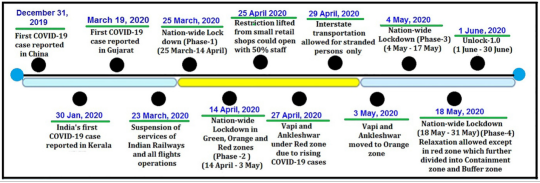
Moreover, to define necropolitics or necropower is the power over death, that focuses on death. Then biopower and biopolitics place more stress on life or the living.
To continue talking about slavery history and to make clear these concepts, Mbembe gives many examples of necropolitics that happen throughout history: the Nazi concentration camps and African American slavery. Through these two examples, these people were inhuman, because people experiencing these events were treated as if they were not the human body but animals. Nazi camps were in conditions where no human could ever live. During African slavery, black people were treated and used as human objects, for commodities. Still, today due to enslavement, we live in a society where some people's lives are valued more highly than others, and the bodies of those who are seen as disposable are subjected to abuse and exploitation. Countless incidents and events have taken place, such as the Black Lives Matter movement, which aims to end the killing of black people. Or could be the mass incarceration of people and the infliction of abuse or other inhumane acts upon them, to make these people do bad things because they were bad before. The Palestinian people are being executed on their land. All the genocide events are the definition of necropolitics.
To deepen the concept of necropolitics, we also must look at the mention of Giorgio Agamben in Mbembe's essay. Agamben’s concepts explain the ‘State of exception’ and of ‘Bare life’. The ‘State of exception’ is the extralegal exercise of surveillance, detention, and torture performed by democratic countries. In these states of exception, rules of law are suspended by neo-liberal democracies. To give a simpler idea it means that the law of protection of citizens against the State’s violation is removed temporarily, and the authorities are allowed to decide to make citizens do what they want. People living in a state of exception have no political status and are reduced to bare life
Mbembé's concept of "The becoming black of the world". Ties to the concept of in today’s society being drawn to technology, or per half being under the power of technology. This is seen as the new form of capitalism, according to Mbembé, the condition of being subjugated to other people's willingness extended to everyone. This new biopower is the outcome of the Nazi’s extermination material, which created a serialization of technologies that allow killing. With this strategy of using a machine to kill people and not a person itself would do the actions it was less remorseful. We can see examples in history where authorities use a machine to compute the killing for them. Well, going back to the Nazis they used a gas chamber to trick people and suffocate them there, or during the French Revolution, the guillotine machine would decapitate a person's head.
And in the 20th century, we can see a new technology divide completely, “nonhuman” actions that make the action for you. Meaning the introduction of drones. Drones are high-tech machines with an algorithm pre-established to do what they must do and make action without an invasion on terrene or being seen. Drone use is not as bad as killing in person, because in theory, whoever is doing the action is not invading the country, therefore there is no need for war. This is defined as vertical sovereignty, which is giving to another country through air space, and not touching the ground because if they had done such a thing through the ground then it would have been war. As a result, we see the development of technology as a new form of sovereignty that allows people to exert control if they so choose without truly taking over the land. However, there are many other ways in which the digital sphere is used to arm people without even realizing it. For example, with the boom of TikTok being a Chinese-made application, the US had suspicions of being spied on by the Chinese government and made their way to take information from the US and use it against them. Therefore, the US banned the use of TikTok for those who worked in the governed range. TikTok also collects people’s data without the user knowing, and this is why governments are uncertain of having this app in their nations. This system could be considered vertical sovereignty because it's another way of infiltration into a nation without using physical force because it's done through the digital sphere.
youtube
1 note
·
View note
Text
Blog 5 - COM 311
Today’s social media platform is often combined with the word algorithm, or perhaps it contains an algorithm that has the power to remove content that violates the platform request. But what is an algorithm?
A researcher Tarleton Gillespie, in the second chapter of Digital Keywords: A Vocabulary of Information Society and Culture, issues an explanation of what algorithms are and their functions in the digital world. But first, there is a distinction to make between data and algorithm. Data can be defined as factual information and used as a basis for calculation and reasoning, information in digital form that can be transmitted or processed. Algorithm, instead, is a step-by-step procedureused to solve a problem or accomplish some end especially by a computer. The term refers to logical series of steps for organizing and acting on s body of data to quickly achieve a desired outcome. However, from an algorithm designer’s prospective an algorithm is a model, the formalization of a problem and its goal, which implies also that there are many algorithms inside a given model.
For example, TikTok is the most popular app used by so many people in the western world. TikTok, algorithm goal is to grab users and keep them hooked on their platform as long as possible to have interaction. The “for your page” on TikTok is the default screen new users appear every time you refresh the page, even if you do not follow those users. This is because the algorithm is based on several factors, meaning that interactions such as videos you like, searchers and account you follow influence what you see.

An algorithm can be trained on a basis of existing material and data, certified either by designers or by past users’ practices. After that, the algorithm is applied to these data in order to train it to pair searches programmed. For example, the use of this kind of algorithm could be the use of face recognition used in the security checkpoint in the airports, or also if we are still looking into the application format there are data installed inside the platform with an algorithm system to look for the violations against the algorithms done by the users. When the system detects the violation, they either ban you from the use of the application or remove your content. Meanwhile, for face recognition, they scan your face and your document with the picture and the system reads it and matches the two faces together to see if they correspond.
The algorithm is usually seen as a talisman, as a separate entity that enjoys the cultural authority. This is what Thrift calls the “technological unconscious”, which is reported in the reading on the article by David Beer’s article “Power through the algorithm? Participatory web cultures and the technological unconscious”, which is the propensity we have to believe technology is objective and, as a result, not challenge it. Software is taking over everyday life, software is a collection of rules, info, or program used to run computers and carry out functions. In this case, the software acts unnoticed and sorts off, users, locations, and contents, which shows how technology helps share human behavior and environments.

0 notes
Text
Blog 2 -Abu Ghraib
Nicholas Mirzoeff – Invisible Empire: Visual Culture, Embodied Spectacle, and Abu Ghraib
Reading the piece written by Nicholas Mirzoeff from the Invisible Empire as visual culture, embodied spectacle, and Abu Ghraib, this issue was invisible to many people, and many seemed not to want to see what happened in that prison. Since in today’s study of digital media and communication, scholars study through visuality and learn from sight, there is a clear understanding that the leaked photographs from Abu Ghraib, seen by the whole world, had no justice for those people's horrible tortures. This ties back to the theory of visual culture that states, visual culture is everywhere and nowhere. Visual culture, which is the battle against visualized that reclaims the right to look and refused to see the truth. The US congress preferred to keep it invisible to people by ignoring the leaked images.
Mirzoeff also describes the surveillance in the state of war, they enter a state where they stand between being and non-being. In the sense that those people that are supposed to make sure nothing goes wrong, when there is an extreme atrocity, they prefer not seeing it. Once again it’s another example of Abu Ghraib's leaked photographs of prisoners in the position doing sodomy or being tortured (image 1).

The second image I am presenting is an event that occurred on May 25, 2020. A police force arrested this man, George Floyd, and forcefully held him with a knee to his throat that he was struggling to breathe. I gave this example because I would like to explain that even in this matter, the United States failed to give punishment to the man who killed Floyd, thus the same thing happened to the guards surveilling the Abu Ghraib prisoners. This is a double-vision conflict as Mirzoeff talks about in his visual culture texts, the evidence used to incriminate the victim instead of who does the action. The sodomy, theory by Mirzoef is connected to everything the proper civilized person is not. The justice system saw once again the white paranoia and not the right to self-defense, applied to all forms of humans. Floyd's event was not so different from Abu Ghraib's tying back to the sodomy. The Abu Ghraib released pictures were proof of what had happened, but many preferred not to see and same form the video of Floyd. And that's where when Mirzoeff talks about the surveillance they are and they are not, because when they want to be heroes, they want to show themselves that they are the force while when something goes wrong, they are nothing and they become invisible.
Hardt and Negri describe the word "empire" as a form of control of global capital that American militaries desired, a desire for dominion over everything. However, Mirzoeff thinks of empire as a completely different imperialism from traditional territorial imperialism. The kind of imperialism they desired was a decentralized and deterritorializing governing instrument that progressively incorporates the entire global realm within its open and expanding frontiers.
And in fact, this was achieved by the U.S. military that maintained the Abu Ghraib prison. The military achieved this domination by torturing and treating these prisoners like animals, I am not exaggerating by saying animals (image 3) carrying a person around by the collar is not something human. And going back to the fact of surveillance at the time of war they become invincible. Usually, war is between two nations, and there is always a side that everybody supports and a side that everybody hates. So in the case of Abu Ghraib and the revealed photographs, the opponents believed that it was an act of torture and barbarism, while the supporters believed and thought that it was a representation of the new imperial masculinity. Pero this masculinity was done with evil and was represented with sodomizing and as the guy says a spectral visualization embodied.

In Mirzoeff's point of view, Abu Ghraib released photographs, and even some videos/photos gave the impression that a surveillance camera was recording everything that was happening within the prison. Yet, this event remained invisible to America and many others. Well, going back to being and non-being, there is something to see but we are not allowed, because if the upper power(government) says so then everyone has to believe. This is because the visuality of war remains profoundly undemocratic.
Regarding The Torture of Others – Susan Sontag
Susan Sontag describes photographs as a mark of how conflicts are judged and how they are remembered. The photograph was adopted as a war's "trophy" symbol. Suntag gives additional proof that photography was used also during World War II, German soldiers are known to have taken dreadful photos of Poles and Russians people. Well, I would say trophy material, because these soldiers were posing in front of painful and unwatchable bodies proudly doing what they did. The woman in the picture below exemplifies what I mean when I say that she has no remorse while smiling in front of this dead body that was tortured.

The more I was reading about “regarding the torture of others” the more I was coming across similar situations, that happened in other situations. For example, Suntag brought up that in the 30s-90s Americans would do the same things with black community bodies photographed and make them visible to the public eye as a masterpiece. By reading that, I was not surprised by the example I gave above in Abu Ghraib's texts, about George Floyd’s case. Floyd's issue was the same as what Americans did back then and are still doing today in the 21st century. Taking pictures of dead bodies, in a pornographic position, or brutal war pictures were once classified as pornography, a form of extreme sadomasochism.
I was unaware of Abu Ghraib or all the atrocities soldiers would do during the war. I was aware of the typical conflict—the bloody one in which the bad people and the good fight for control of other lands. But from the reading of Abu Ghraib and the “regarding the torture of others”, so many generations do not know about these events. Honestly, it's not clear anymore if it's better to teach these things or better if they never get out, because so many events and history have repeated them. However, since today's technology is so advanced, today’s criminal activities run in the news very quickly because the internet travels fast and the news does too. Another example Suntag uses is that the soldiers would record or capture these moments, perhaps for the sexual aspect of torture made them more interesting to document.
Soldiers utilized the recording to express their desire for sensual thoughts, but today's users use it to communicate and document their daily activities. Many influencers record their daily activities or it is also used for television. The recording documentation today is also used for teaching purposes. Here is an example of how today's videos are used: https://www.youtube.com/watch?v=36jpmfuC1fc&ab_channel=HistoryonMaps. All these show how much so many people are not aware of the technology development or why they were created in the first place. Today people use it as if it was born for vlogging, documenting their lives, or telling their own stories when in reality all these were the creation of horrible stories.
0 notes
Text
Blog 4 - CMS/PL 348
Nicholas Mirzoeff - The Spaces of Appearance #BlackLivesMatter
How many more black bodies have to be gone and killed before humanity can understand that it is inhumane to kill innocent and defenseless people?
Nicholas Mirzoeff, the author of "the spaces of appearance”, and many other books that we have analyzed so far in this class managed to explain and show so many unclear events in history. The spaces of appearance are basically a crack in the society of control, societies were supervised and controlled society but standardized life that is controlled by the capitalism stated. Since the beginning of this course, I have only learned so many disgusting and horrible stories that we younger generation are unaware of. So to begin, we started with the accusation of Colin Powell against the Iraqi people killing most of the citizens by using blurred images. Then we proceeded with the story of Abu Ghraib, which almost no one knows about it, and those that do know decided to hide it. Therefore, here we are talking about once again, discriminating and dehumanizing a minority group. This blog is about the Black Lives Matter movement that started, way back in American history when they would kill so many black innocent bodies, for just looking at someone with lighter skin. However, the movement really began to matter, with the civil rights movement, which create a movement on protecting the black communities from discrimination and slavery. However, this really became to matter only when in 2013 with the hashtag #BlackLivesMatter, social media platforms spread the hashtag word. This concept finally created a new way of seeing. The ‘seeing’ meaning at that point of intersection of what we know, what we perceive, and what we feel by using all our senses.
The images below do not show that history has taught humanity to learn from past events. in America still today, even after the application of civil law and all the protests on black lives matter, nothing changed. The images are from all the protests, done against the unjustified killing of black community people.

Mirzoeff ties this action of killing the black bodies back to American history, where it begins with Slavery sustaining its regime, which he calls the “oversight,” which is then felt surveillance of the overseer of enslaved human beings. This regime was ultimately allowed by cruel violence, which lead to the quotidian performance of complicated labor, often not under direct supervision. Many black people also met their death by lynching as a result of such purported looking. This can be tied back to the reading from Butler's "endangers", which explains the aggressive reading of the evidence of the actual victims due to the white paranoia. White Paranoia, which believes that white has power over any other color, is superior to the west. However, Mirzoeff, from his reading, explains the change in the BLM movement and how they overcame to raise their voice to make their way through social media platforms to make the entire world see the truth. Black Lives Matter protesters have described the experience of the movement as a coming-to-meet-the-police gaze. No matter how hard these activists fight against racial justice, it seems never to get over it. The reading also talks about the power of visual culture in shaping social and political movements, by continuously bringing up the unfair racial justice struggles in more countries.
The freedom of appearance is a practice, whereby people make themselves visible to each other. These people make this happen, by using visual media through social media content. One example Mirzoeff gives is the union of Palestine and the Black Lives Matter movement, by supporting each other's movement.

“Hands Up, Don’t Shoot” the gesture of raised hands is to show that the hands are empty and they have nothing to arm anyone. Police show no mercy when they shoot a black body, because the body they are choosing to eliminate is a minority, and police know that the law will always protect them. The “Hands Up, Don’t Shoot”, became the existing language of Black protest, by encouraging more people to join. The gesture paradoxically shows the vulnerability of the people computing the action. Right after all the protests and symbols, white police killed a young boy Darren Wilson, even though he had his hands up. From the images below we see that the younger generation is being raised in this ugly environment, but so many politicians do not care because it's not their white privileged children.


One great movie that shows a broken justice system is "The Hate You Give Me”, the first time when I saw the movie I did not believe that the authorities could have pointed a gun at a kid. Visual media is everyone where and the demonstration of discrimination against minority groups still follows. Throughout, there is a scene where a little kid wants to defend his dad and pulls out a gun and points it against white police. Then the sister, put her hands up, like "hands up don't shoot", she does that because the police had pointed the gun against the little boy.
youtube
The purpose of social media here is to make people see what is going on in real life and make them aware to participate and be aware of where they go. Mirzoeff, in his book, describes so many failed prevention efforts on the protection of civilians black civilians, because the system is a broken window with white supremacy. Despite all the millions spent, police rarely prevent violence. Polices were mostly focused on criminal matters of any kind, rather than seeing and dealing with violent criminals. The justice system is not fully protecting civilians' lives or giving them their right to human rights. Rather is doing the opposite, those who made the law are the first tone to break them, consequently, the rest will follow the flow. Nevertheless, those to suffer will always be minority groups and innocent civilians from being the way they were born.
0 notes
Text
Blog 4 - COM 311
Henry Jenkins - Welcome to Convergence Culture
What is convergence culture?
The word convergence means a flow of content across multiple media, and cooperation between media. Where in today's social media all the tech industries, brands, businesses, and everything that is on social media platforms are available for everyone. The shaping of media content happens top-down by decisions made in corporate boardrooms and bottom-up by decisions made in teenagers' bedrooms. This means that the content that we share on social media is integrated by media industries and that company runs the platforms and owns what we have released. Teenagers with the development of the media, now have a big role in the media area. They are the ones who push up the contents by wanting the media where, how, when they want it, and in what form they want it. If, so it is not possible then they are also willing to get the content or the information even if it's illegal. As Jenkins describes in his book “why media spreads”, even a video shared without permission is considered “piracy’ or “infringement”. Piracy shorts out the conversation of the economic and cultural impact of different types of media sharing. The people that commit piracy, are taking a profit economically from the unauthorized sale of content online. Jenkins argues that convergence is a cultural logic rather than a technological process. This is because consumers are encouraged to seek out new information and make connections between dispersed media content.
To continue, Jenkins keeps explaining participatory culture, as the new media system where everyone is potentially a producer of media as well as a consumer of media. This is because the interactions of sharing, remixing, reposting, and creating mutually rewarding people are empowered by technology. Important to remember that, to make the distinction between participation and interactivity.
Interactivity refers to how technology has been designed to give an answer to the user. On the other hand, Participation is a social-cultural phenomenon enhanced by technology for which users can remix and change media content.
Henry Jankins - Why media spreads
“If it doesn't spread, it's dead”, Jenkins's book “why media spreads” starts with this quote that means if any content that is on media platforms, and it's not spreading, on all the platforms then the idea and purpose are dead. Therefore, this is bad for the economy and for brands and content creators. So it comes back to the concept of convergence culture but explained through spreadability and stickiness. The book focuses on the circulation of content, and why sharing became such a common practice.
The description of spreadability is a technological resource that makes it easier to circulate the contents on media for their purposes. Jenkins brings back the idea of participatory culture as the cultural production and social interactions of fans and communities. Moreover, we can see this example through the description of stickiness, which is the need to create content that attracts the audience's attention to a website. The circulation of media consumption also becomes collective and is seen as the source of media power called collective intelligence.
Here below we can see an example of spreadability: the performance of Rihanna, a famous singer that participated in the Super Bowl halftime performance, and everyone for a whole week spoke about her show.
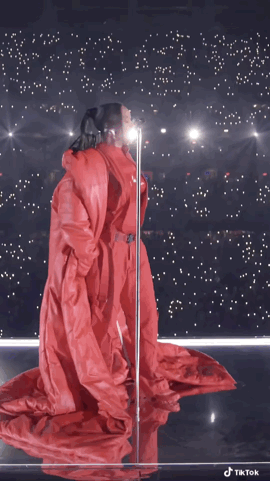
This above gif is a video in the repetition of Rihanna’s super bowl performances, her performance was appreciated by so many people that for a week all social media was spread by her face and choreography.

Here we can see an example of a person copying Rihanna's dance. She went viral as a virus as Jenkins in his book describes media viruses meaning the spreading and remixing of contents as viruses, and stating that they are not ‘like’ but they are viruses.
The spreadable media helped push up Rihanna's performance, by circulation remaking, with a mix of top-down and bottom-up to be viral and reach so many social media platforms. Because the networking communities play in shaping how media circulate and audiences are making their presence by being active. The concept of spread, spreadable, and spreadability is an increasingly pervasive form of media circulation.
0 notes
